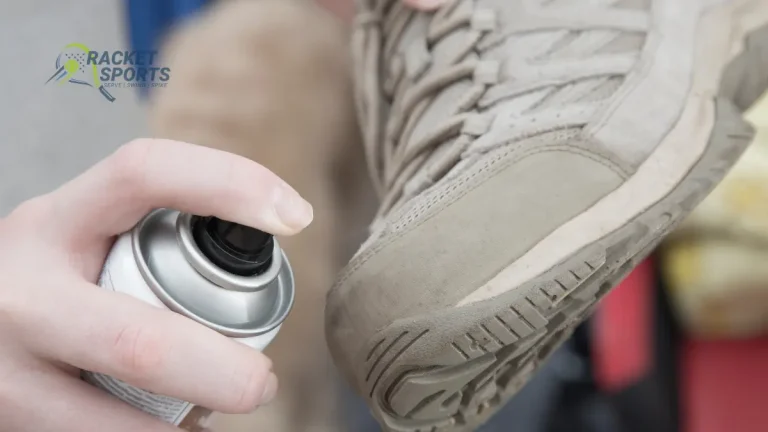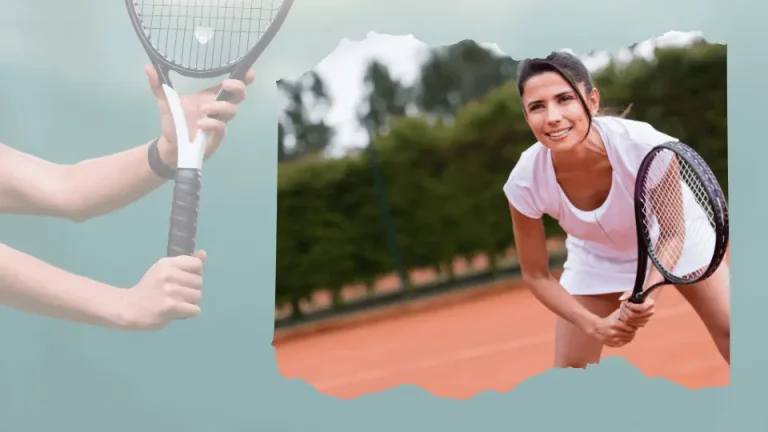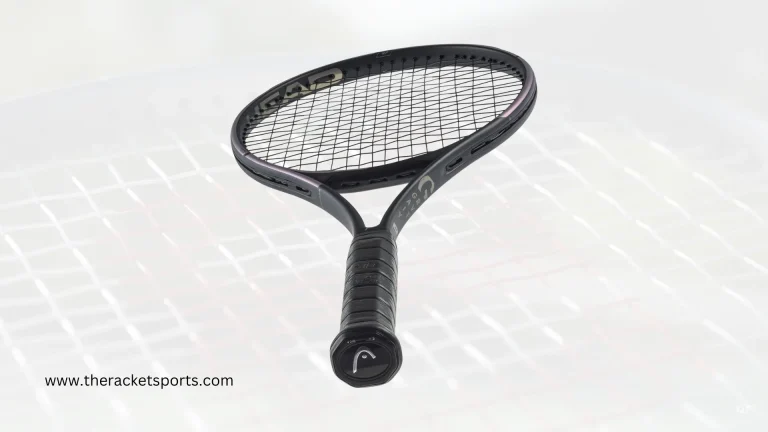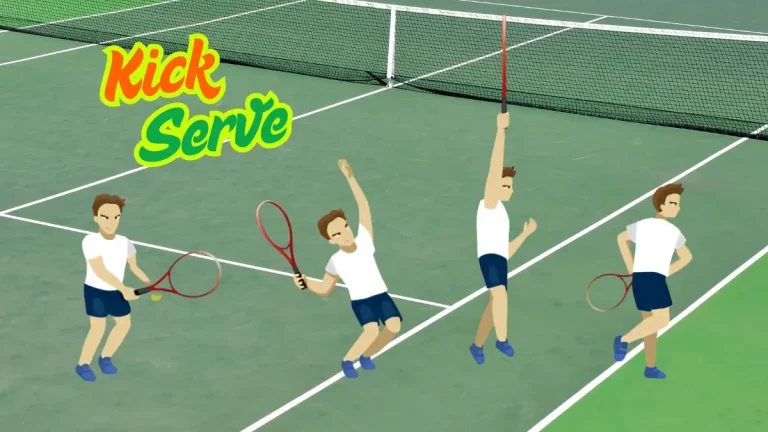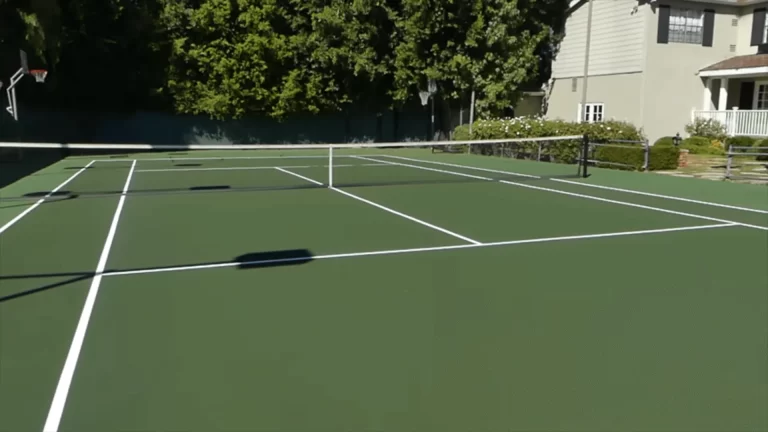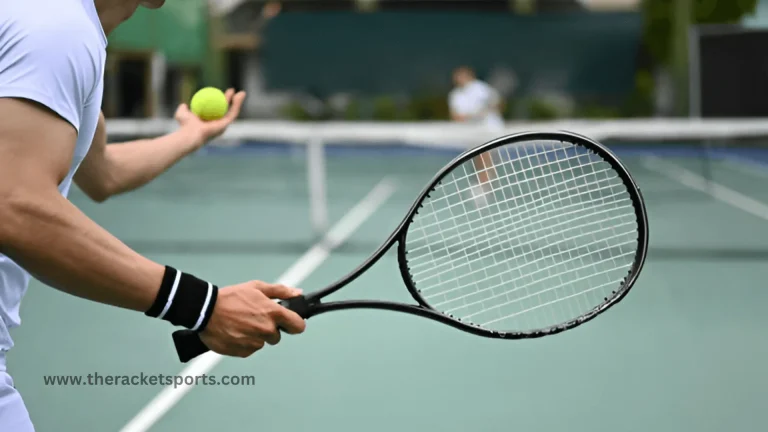Types Of Tennis Strings – Experts Top Choices 2025
Tennis strings, where accuracy meets power, might be the game-changer you’ve been seeking in the world of tennis. Understanding the complex world of tennis strings is critical to reaching your best potential on the court.
In this in-depth article, we’ll look at the different types of tennis strings, including materials, gauges, tensions, and patterns that can have a big influence on your game.
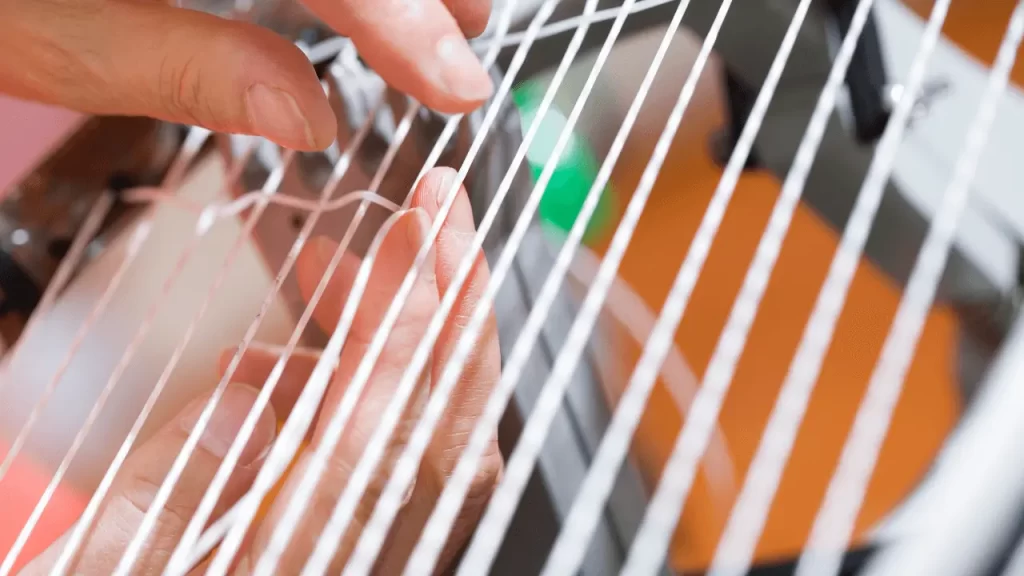
By the end of this overview of tennis string types, you’ll know how to make a string selection that perfectly complements your playing style, just like how Novak Djokovic carefully selects his strings to optimize his performance. So, let us have a look at the fascinating world of different tennis strings.
Types of Tennis Strings Chart
| Type of Tennis String | Characteristics and Pros | Cons | Suitable Player Profiles |
|---|---|---|---|
| Natural Gut Strings | – Unmatched comfort and feel | – Costlier than synthetic strings | – Players valuing maximum comfort and feel |
| – Excellent power, control, and touch | – Not as durable as polyester | – Top players seeking performance and lower risk of arm injuries | |
| – Good tension maintenance | – Sensitive to moisture and weather | ||
| Synthetic Gut Strings | – Affordable for all skill levels | – Not as soft as natural gut | – Recreational and beginners seeking balanced performance |
| – Balance of power and control | – Provide less power and feel compared to premium strings | – Players seeking affordability and flexibility | |
| – Durable for synthetic strings, good for extended play | – Tension maintenance can vary | ||
| Multifilament Strings | – Comfortable and arm-friendly | – Less durable compared to polyester strings | – Players of all levels seeking comfort and feel |
| – Provide good power and feel | – May not provide as much control as poly strings | – Players looking for a softer and forgiving setup | |
| – Responsive and suitable for various playing styles | – Tension maintenance can vary | ||
| Polyester (Poly) Strings | – Exceptional control for aggressive players | – Can be harsh on the arm, potential discomfort or injury | – Advanced players prioritizing control and spin |
| – Durable, consistent performance | – Tension loss over time can affect playability | – Players with aggressive baseline games | |
| – Good spin potential | – | – Those favoring precise shot placement and spin | |
| Kevlar Strings | – Very durable, lasts a long time | – Can be uncomfortable due to stiffness | – Advanced and professional players prioritizing control and durability |
| – Offers precise control and tension maintenance | – Less powerful than other strings | – Players using a lot of topspin | |
| – Resists wear and tear in tough conditions | – Not suitable for players with arm problems | ||
| Textured Strings | – Increases spin potential for topspin shots | – Less powerful compared to other strings | – Intermediate to expert players enhancing spin |
| – Offers good control for precise shot placement | – Some players may find it uncomfortable | – Players producing topspin shots | |
| – Durable and maintains tension effectively | – Not suitable for beginners or those seeking a gentler feel | ||
| Nylon Strings | – Versatile, fits players of all skill levels | – Less durable compared to polyester or Kevlar strings | – Beginning and recreational players with a balanced game |
| – Good combination of power, control, and comfort | – May not offer extreme spin potential | – Players seeking well-rounded performance |
Types Of Tennis Strings Explained
The choice of strings for your racket is significant in the world of tennis since it affects your performance on the court and your style of playing tennis. Tennis strings are constructed from various materials, each with its own characteristics, benefits, and drawbacks. Let’s look at the many sorts of tennis string materials to assist you in making an informed decision:
- Natural Gut Strings:
Natural gut strings are the finest degree of tennis string workmanship, manufactured from cow or sheep intestine fibers. They are famous for their unmatched softness and comfort. Natural gut is the gold standard for string performance because of its outstanding balance of power, control, and touch. The suppleness of these strings effectively dampens stress and vibration for players.
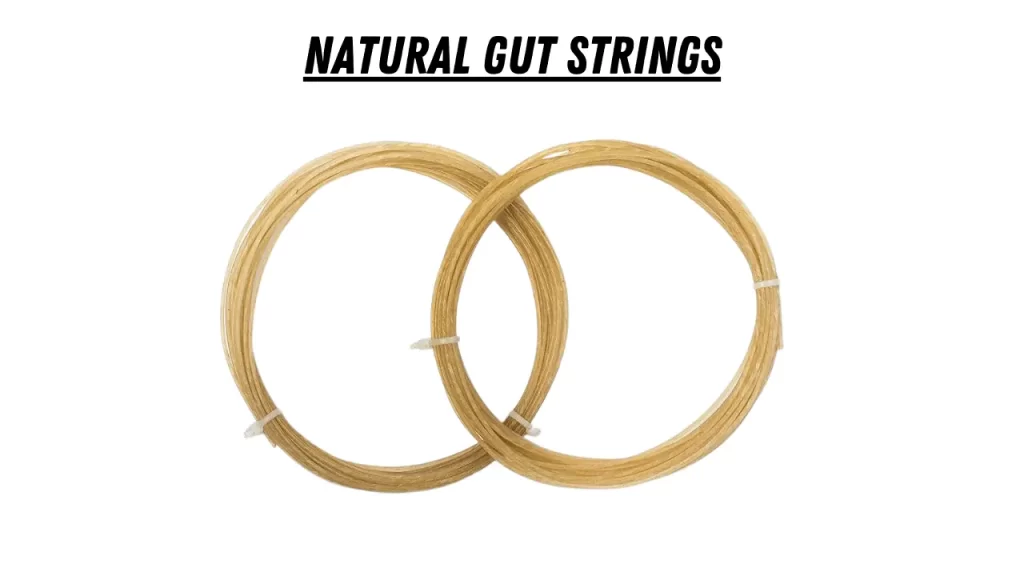
Pros & Cons:
Suitable Player Profiles:
Natural gut strings are recommended for players who value maximum comfort, touch, and feel above all else. They are frequently preferred by top players, including Roger Federer, due to their outstanding performance and lower risk of arm injuries.
- Synthetic Gut Strings:
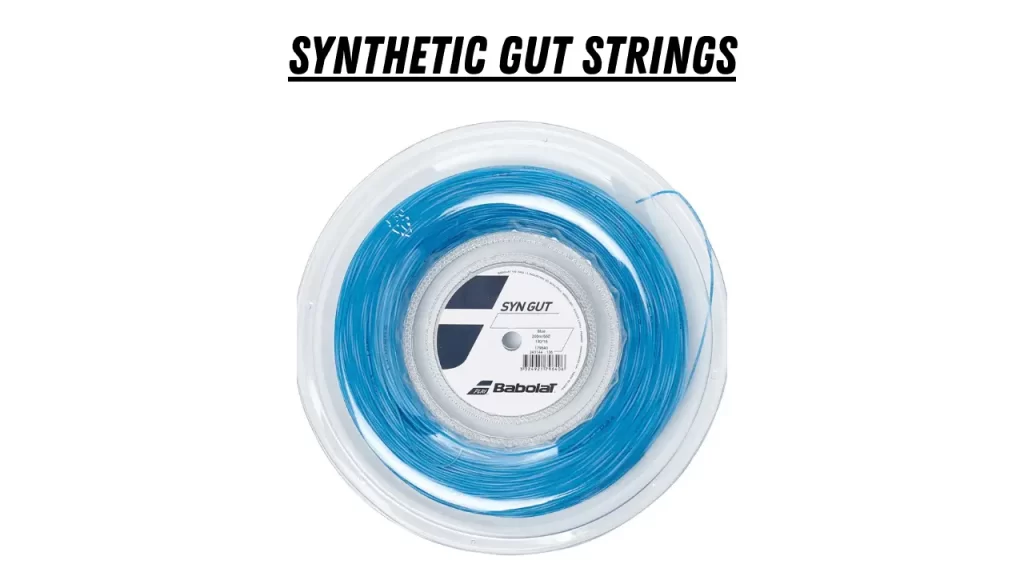
Nylon or other synthetic materials are commonly used to make synthetic gut strings. They offer an optimal blend of power and control. These strings are popular among tennis players since they are inexpensive and widely accessible. Synthetic guts are more durable and less vulnerable to moisture than genuine guts.
Pros and Cons:
PROS
Suitable Player Profiles:
Synthetic gut strings are an amazing option for recreational and beginners looking for a low-cost solution with balanced performance. Players seeking flexibility without paying a premium price prefer these strings.
- Multifilament Strings:
Multifilament strings are made up of several tiny filaments grouped together to imitate the softness and comfort of the natural gut. These strings provide a comfortable feel, like a natural gut, and good power, touch, and shock absorption. Multifilament strings are well-known for their responsiveness and playability.
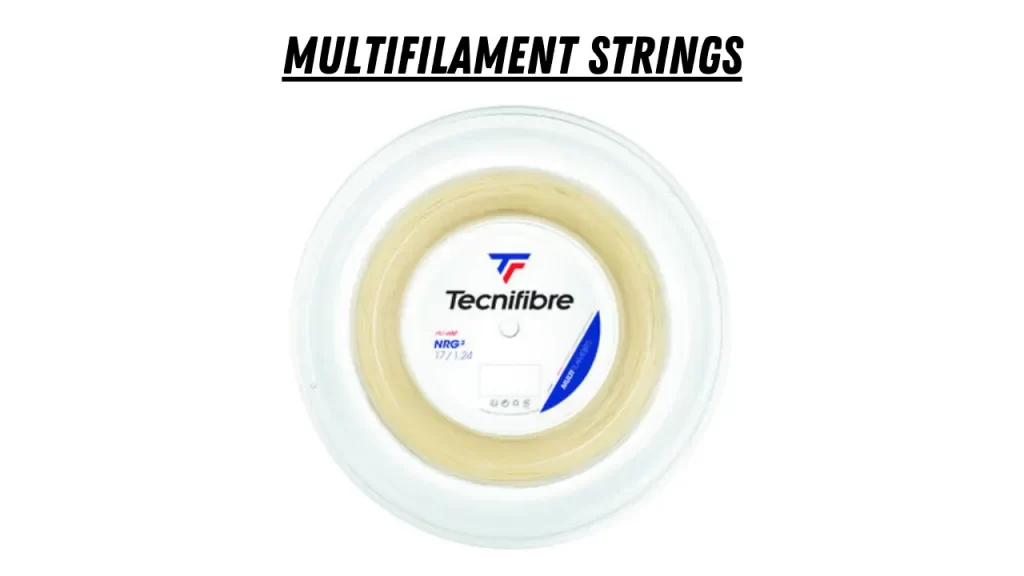
Pros and Cons:
PROS
Suitable Player Profiles:
Multifilament strings are an excellent choice for players of all levels who seek comfort, feel, and power without the drawbacks of a natural gut. They are often chosen by players looking for a softer and more forgiving string setup.
- Polyester (Poly) Strings:
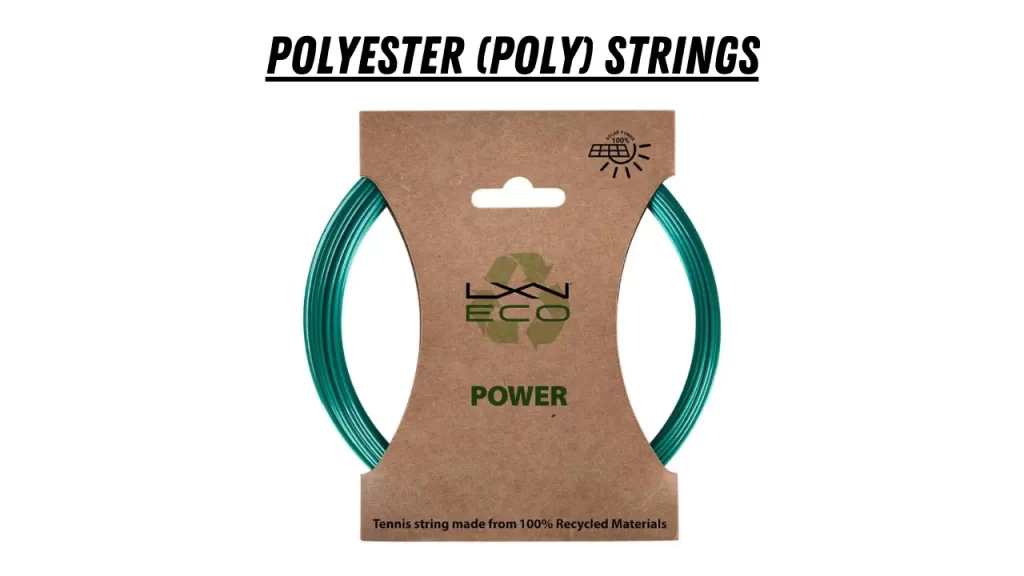
Polyester strings are distinguished by their firmness, which provides outstanding control. These strings are extremely robust and effectively retain tension. Polystrings have poor elasticity and provide little power.
Pros & Cons:
PROS
Suitable Player Profiles:
Polyester strings are best suited for advanced players who prioritize control, especially those with aggressive baseline games. Professional players like Novak Djokovic prefer these strings for their ability to generate spin and precise shot placement.
- Kevlar Strings:
Kevlar is a synthetic material that was initially created for ballistic armor because of its outstanding strength and durability. Because of their extremely high strength, these strings are resistant to breaking or stretching.
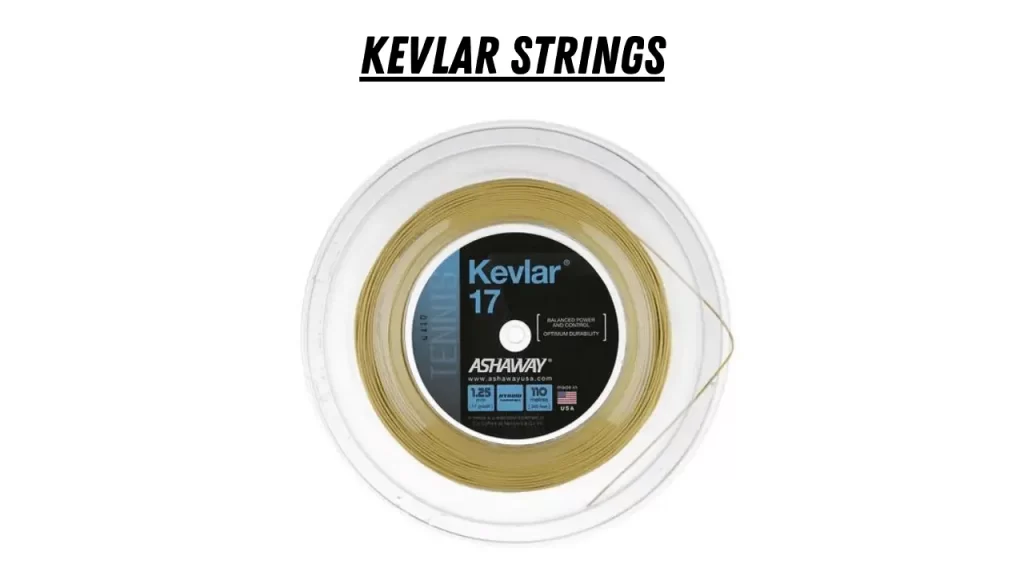
Kevlar strings have a low elongation, which allows for great control and tension maintenance. These strings are durable, making them ideal for aggressive, hard-hitting players.
Pros and Cons:
PROS
Suitable Player Profiles:
Kevlar strings are typically preferred by advanced and professional players who prioritize control and durability over comfort and power. Renowned professional players like Pete Sampras have used Kevlar strings to achieve incredible control and precision in their shots.
- Textured Strings:
The rough surface of textured strings provides more spin and bite on the ball. They are frequently constructed of polyester or co-polyester. The textured surface supports contact between the ball and the strings, increasing spin potential.
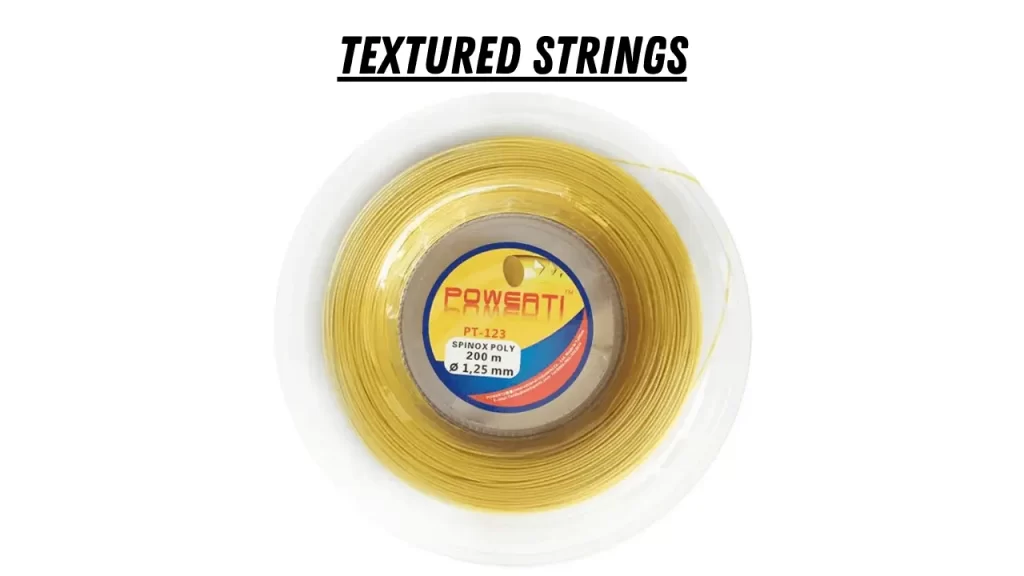
Textured strings provide good control and can assist players in producing more topspin.
Pros & Cons:
PROS
Suitable Player Profiles:
Textured strings are frequently used by intermediate to expert players who wish to enhance spin to their strokes while maintaining control. Professional players like Rafael Nadal are known for using textured strings to generate immense topspin on their forehands.
- Nylon Strings:
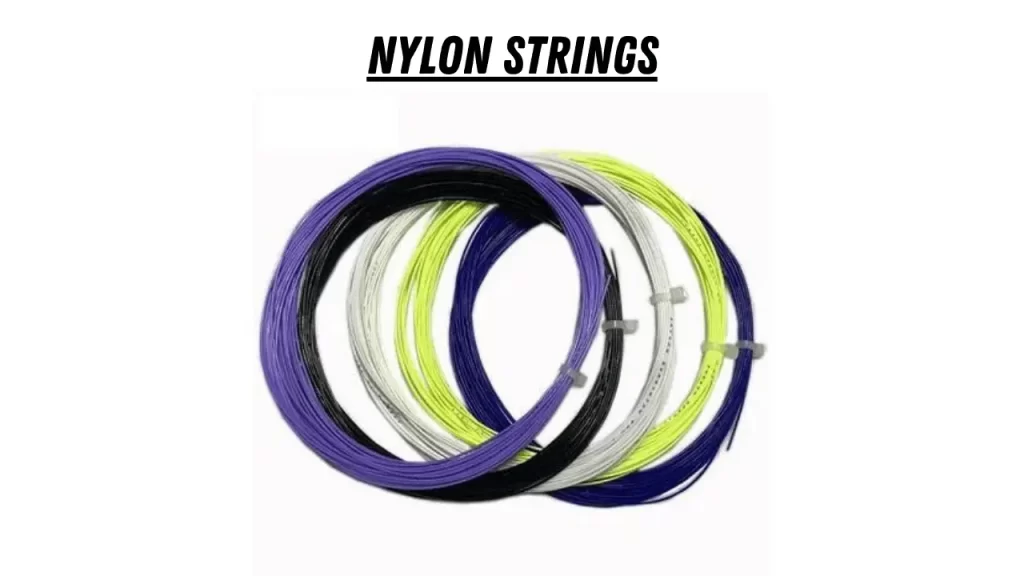
Nylon strings are one of the most common strings and are often constructed of synthetic materials. They offer a fantastic balance of power, control, and comfort. Nylon strings are available in various thicknesses and constructions, allowing players to select a string that best matches their needs. They are versatile and suitable for a wide range of playing styles.
Pros and Cons:
PROS
Suitable Player Profiles:
Nylon strings are perfect for beginning and recreational players looking for a well-rounded string with a nice combination of power and control. Players like Serena Williams have used nylon strings earlier in their careers due to their versatility and reliability.
Understanding the properties and application of various tennis string materials is an essential step toward improving your game. Your selection should reflect your playing style, skill level, and preferences. As we continue exploring the subject of tennis strings, we’ll look at string gauges, tensions, and patterns to help you make the best pick for your racket.
Tennis String Gauges:
String gauge in tennis refers to how thick or thin your strings are. Thinner strings have lower numbers, such as 16 or 15, but thicker strings have higher numbers, such as 17 or 18. The thickness of your racket influences how it feels and plays.
Thin vs. Thick Strings:
Thinner strings, such as 18 or 17-gauge, provide greater touch and spin, but they are more prone to breaking. Thick strings, like 16 or 15-gauge, are more durable and give better control but produce less spin and feel. Thin strings are easier on your arm, which is beneficial if you have arm problems.
Thin strings provide greater power and spin, which is ideal for hitting hard and putting a lot of spin on the ball. Thick strings provide superior control, allowing you to place your strokes more accurately and play with greater precision, but they do not provide as much power.
Recommendations Based on Playing Style:
Choose thin strings if you like a softer, spin-friendly game. They’re ideal for those who can create power but want more touch. Choose thick strings if you want a more regulated and long-lasting game. They’re excellent for precision and stability, especially for strong players or those with quick swings. Your selection should reflect your style and level of comfort.
Tennis String Tension
String tension refers to how tight or loose your tennis racket’s strings are. It is measured in pounds or kilograms. Tighter strings indicate more stress, whereas looser strings indicate less strain. String tension impacts how well your racket plays on the court.
Low vs. High Tension:
- Low Tension: Low tension (looser strings) provides you greater power, a more prominent sweet spot, and aids with topspin. It’s comfortable, reduces arm strain, and is useful if you don’t swing quickly.
- High Tension: Tighter strings provide more control, precision, and less power. High tension concerns control and accuracy, ideal for precision and fast swings.
Customization and Experimentation with Tension:
Players can, at times, adjust the tension to fit their playing style. You may play with power and control to find the appropriate balance. Some players use varied tensions for the main and cross strings. Seek the advice of an expert if necessary.
Tennis String Patterns
String patterns in tennis relate to the configuration of the racket’s main (vertical) and cross (horizontal) strings. The pattern determines the number of main and cross strings and the spacing between them. String patterns are commonly stated in the format “16×19,” where the first number represents the mains and the second number indicates the crosses.
Open vs. Closed String Patterns:
Open String Patterns: There are larger gaps between the strings in rackets with open string patterns. A 16×19 string pattern, for example. Open patterns create greater spin and power because the ball may “bite” into the strings and pocket before rebounding. This might lead to greater topspin and a more lively feel. They may, however, give significantly less control.
Closed String Patterns: Closed string patterns, such as 18×20, feature less spacing between the strings. Because of the denser string arrangement, they provide better control and precision, resulting in a flatter, more predictable ball trajectory. Closed patterns provide less spin and power, allowing for better shot placement.
The string pattern should suit the player’s playing style and preferences. Players can try out several patterns to find the one that best matches their game. Consultation with a tennis teacher or expert stringer can also be beneficial in determining the best string pattern for your racket.
Hybrid Tennis String:
When you use two different kinds of strings in your racket, you have a hybrid tennis string. The vertical (main) strings use one string type, while the horizontal (cross) strings use the other. This way, the combination provides the benefits of both string types in a single racket.
Using a softer, multifilament string for the mains (to increase feel and comfort) and a more durable polyester string for the crosses (to improve control and spin) is a common hybrid combination. Natural gut for the mains (for comfort and power) and polyester for the crosses (for control) are two additional common options.
Benefits and Drawbacks of Hybrid Setups:
- They can increase the playability of your racket by balancing power and control.
- You may modify them to fit your playing style.
- They might also last longer and provide more spin.
- However, choosing the proper mix may be difficult, and you may need to experiment to find what works best for you.
Consider your playing style while choosing the best hybrid setup. A softer main string will provide greater power and comfort. Choose a polyester main if control and spin are important to you. Consult a professional stringer or Coach to help you choose the best blend.
String Maintenance and Care:
String maintenance is essential if you want them to last longer and play better. It’s a simple technique for getting the most out of your racket.
- To extend the life of your strings, clean them after use, prevent high temperatures, apply vibration dampeners, and rest your racket as needed.
- Reduced tension, loss of control, fraying, or notching in your strings are all symptoms of a problem. This indicates that it is time for you to rest your racket.
- You can string your own racket, but having it done professionally ensures perfect tension and quality. Consider your abilities and the importance of proper stringing in your game.
Finding Your Ideal Tennis String:
When it comes to tennis strings, it all comes down to personal choice. Everyone has distinct preferences when it comes to factors like power, control, feel, and comfort. Seek assistance from a coach.
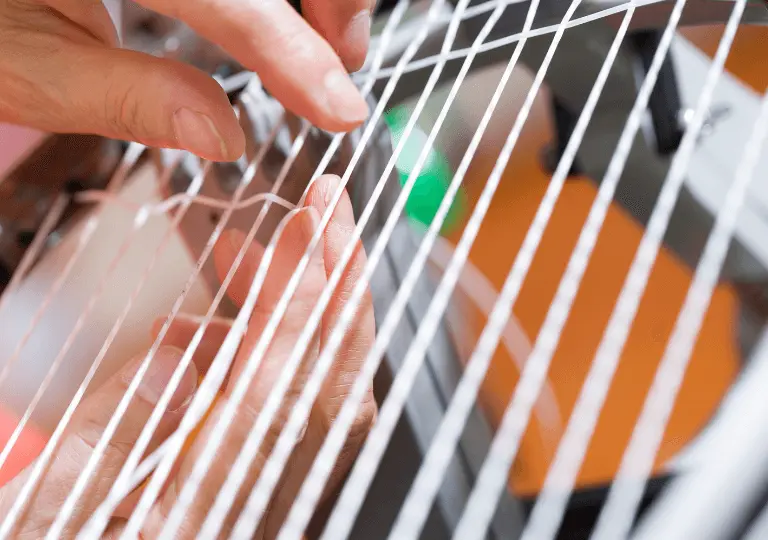
They can observe your playing style and offer strings that suit it. Try out different strings and tensions to find which one you prefer. It may take a few tries, but finding the perfect tennis string is well worth the effort and can help you serve better. Consider your budget as well. Premium strings are great, but there are also less expensive ones that function well.
Conclusion
These are all the famous and available types of tennis strings for all levels of players. Choosing the right tennis string is like finding the perfect instrument for your game. From the softness of the real gut to the control of polyester, there’s a string for everyone. To fit your playing style, adjust your racket’s gauge, tension, and pattern.
Experiment, consult professionals, and keep your budget in mind. Your ideal string is out there, ready to enhance your tennis experience, just like it has for tennis professionals such as Novak Djokovic and Serena Williams. So go ahead and get on your journey and choose your string types per your style.
Frequently Asked Questions
- Which tennis string is best for beginners?
Synthetic gut strings are a good choice for beginners due to their balance of power and control, affordability, and durability.
- Is the price of natural gut strings worth it?
Natural gut strings are expensive but provide unmatched comfort and feel. They are favoured by professional players for their exceptional performance.
- How does string gauge affect playability?
Thicker strings (lower gauge) offer durability and control, while thinner strings (higher gauge) provide more power and feel. Choose according to your playing style and preferences.
- What’s the difference between low and high string tension?
Low string tension offers more power and spin, while high tension provides control and accuracy. Your options can be determined by your playing style and requirements.

